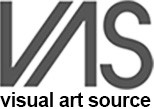John T. Lyle and the Future of Regenerative Design
John T Lyle (1934-1998) was a professor of landscape architecture at Cal Poly Pomona from 1968-1998. He is perhaps best known for his work in the field of regenerative design and for founding the Center of Regenerative Studies, located on the campus of Cal Poly Pomona. In writing about the Center for Regenerative Studies, Lyle states, “the focus on regenerative systems is not so much a focus on technology as it is a deeper concern for shaping an integrative and mutually supportive relationship between humans and nature.”
While Lyle’s ideas and work developed over time, to organize them chronologically would be to miss the web of complexity of his vision and the inter-relatedness of his ideas as a whole. This exhibition is designed with that in mind. It does not follow a linear timeline, instead it is conceived as a Venn diagram with five overlapping spheres of content that represent Lyle’s ideas, endeavors, and accomplishments in his life and professional practice.
In Design for Human Ecosystems, Lyle writes that the design component of scale is one of the three fundamental organizational concepts (along with design process and ecological order) in shaping ecosystems that provides an “encompassing frame of reference.”
With poetic play on Lyle’s ideas of scale, the five overlapping spheres of content symbolize scales of his thinking and include: Cal Poly (his local community); Homes & Gardens (the private residence); The Future (an imagined time/place); Outside Communities (the greater United States); and Writings, Talks & Travels (Earth). Through this structure, the show illuminates the range of his work, from traveling the world to the design of his personal garden, from his writing to his teaching and from his long-term work within his own local community to individual projects in locations across the county.
Lyle’s work in ecological design was grounded in ideas of his own as well as those of others that he applied to his field. Language, thought, and exploration of ideas were central to his practice and were explored in depth through his writings and talks. It is not possible to show all of Lyle’s important ideas around ecological design in this exhibition, so we focus on a few of his main concepts as highlighted by the content in each of the five spheres.
Creating a continuous line at the top of the gallery walls and flowing through all five spheres are graphic panels that illustrate Lyle’s “12 Regenerative Strategies,” taken from Regenerative Design for Sustainable Development. Each strategy is illustrated with a triptych that includes a description of the strategy, a photograph, and a diagram from Lyle’s work.
This exhibition is designed to be experienced as a continuous regenerative (“inherently self-renewing”) cycle. In line with Lyle’s ideas of regenerative design, the show is not meant to have a beginning or an end, but rather to offer a continuous loop of experience, opportunities to ask questions and to learn new information, and then to start again with a new set of information.


